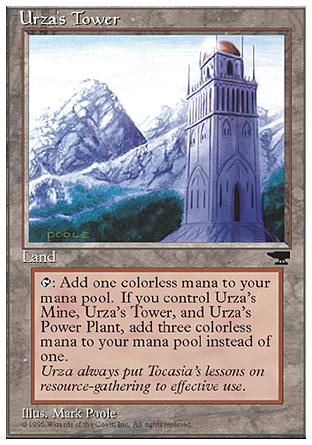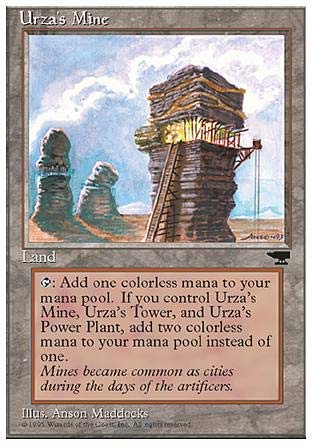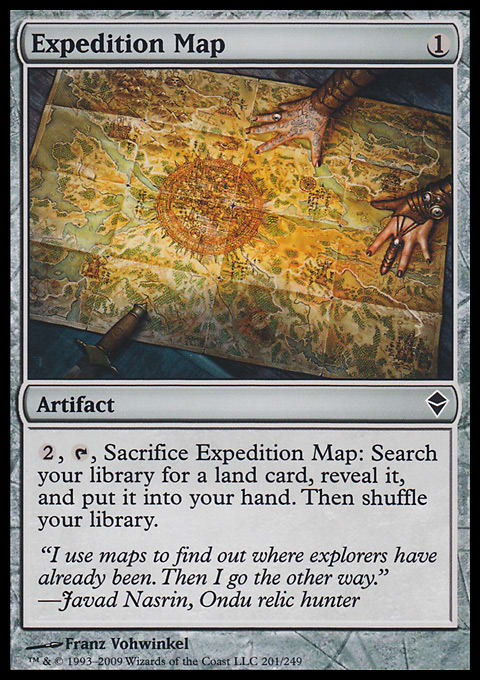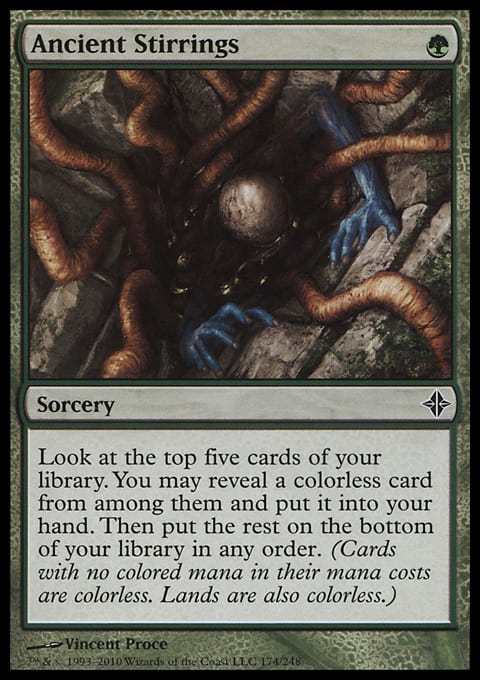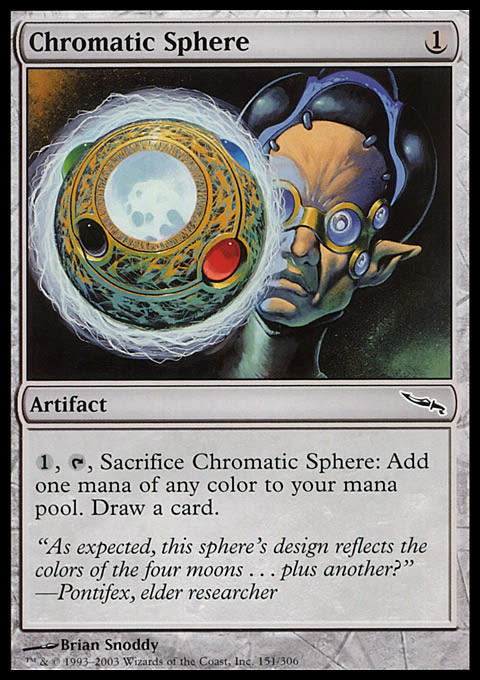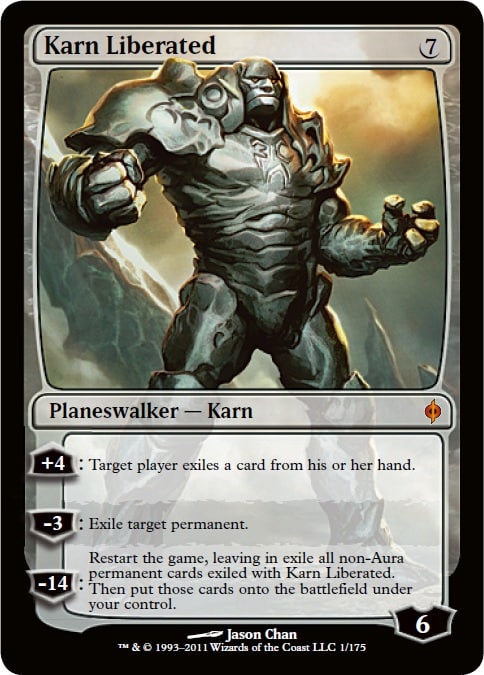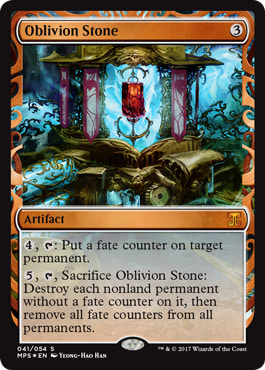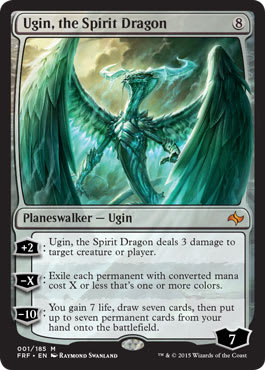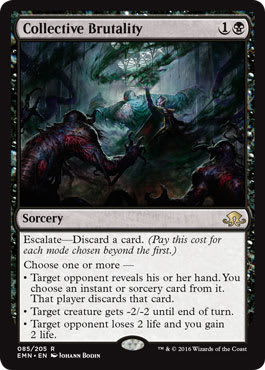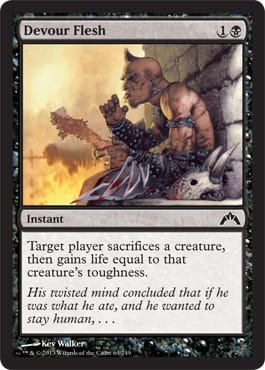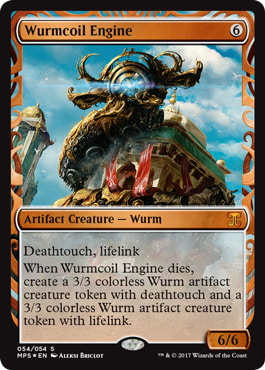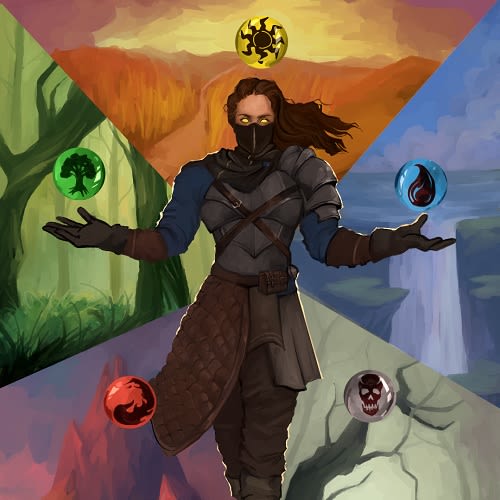Hello everyone and welcome to the first installment of my weekly column here on Gathering Magic. For those who are unfamiliar with myself — my name is Jeff Hoogland. I am a competitive Magic player who has been writing strategy content and streaming on Twitch for the last few years now. I got into competitive Magic playing on the open series (now the SCG Tour) starting in 2013. I have over a dozen open Top 8s across all three Constructed formats with countless classic and IQ Top 8s past all of those.
Constructed Magic is my passion, and I primarily like to focus on non-rotating formats like Modern and Legacy. These formats with deeper card pools tend to reward players who put in the hours to become familiar with all of the different decks that exist in them. Unlike Standard, which tends to have fewer than a dozen competitive decks at any given point, Modern and Legacy tend to have dozens of decks that are moderately competitive and see regular play.
Today I would like to talk a bit about a deck I have been playing in Modern lately and one that I feel gets a reputation it does not deserve —![]()
![]() Tron. Having spent a good deal of time playing Modern and interacting with lots of Modern players I feel like the common mindset is that Tron is an “easy” or “brainless” deck to play. The reason Tron comes off this way to inexperienced players is because it is doing powerful things.
Tron. Having spent a good deal of time playing Modern and interacting with lots of Modern players I feel like the common mindset is that Tron is an “easy” or “brainless” deck to play. The reason Tron comes off this way to inexperienced players is because it is doing powerful things.
Modern is a format where you are often going to be winning, and losing, some amount of the matches you are going to play during the deck registration portion of your event. What I mean by this is there are a lot of matchups in Modern that are fairly lopsided in one direction or another. A good example of this with Tron is the matchup against fair midrange decks playing Tarmogoyf such as Jund and Abzan. These decks simply do not have the tools to deal with the powerful things Tron is doing most of the time.
That being said — just because some of our matchups are easy does not mean all of them are. Tron is good against midrange decks like Abzan because, at its core, it is really a control deck. Don’t believe me? Let’s take a look at my current Tron list and explain what I mean:
B/G Tron ? Modern | Jeff Hoogland
- Creatures (7)
- 1 Ulamog, the Ceaseless Hunger
- 1 Walking Ballista
- 2 World Breaker
- 3 Wurmcoil Engine
- Planeswalkers (6)
- 2 Ugin, the Spirit Dragon
- 4 Karn Liberated
- Instants (3)
- 3 Fatal Push
- Sorceries (8)
- 4 Ancient Stirrings
- 4 Sylvan Scrying
- Artifacts (17)
- 2 Relic of Progenitus
- 3 Oblivion Stone
- 4 Chromatic Sphere
- 4 Chromatic Star
- 4 Expedition Map
- Lands (19)
- 2 Forest
- 1 Ghost Quarter
- 1 Llanowar Wastes
- 1 Sanctum of Ugin
- 2 Blooming Marsh
- 4 Urza's Mine
- 4 Urza's Power Plant
- 4 Urza's Tower
- Sideboard (15)
- 2 Devour Flesh
- 2 Thragtusk
- 2 Seal of Primordium
- 1 Thoughtseize
- 1 Walking Ballista
- 4 Collective Brutality
- 2 Nature's Claim
- 1 Swamp
For those who are unfamiliar with this archetype, the basic idea is to assemble these three lands together:
So we can make large amounts of mana in order to play our expensive cards that control the board. We ensure we assemble our three different lands consistently in a few different ways:
Expedition Map and Sylvan Scrying are our most powerful tools for finding whichever Tron piece we are missing, but they are also the least flexible. While Ancient Stirrings can only look at the top five cards of our deck, it also has the ability to find us colorless threats in the late game when we are no longer looking for lands. Chromatic Star and Sphere are not searching in the specific sense, but because they replace themselves with a new card for minimal cost they essentially allow us to play a 52 card main deck.
When we have assembled our lands we use them to cast powerful colorless spells to help control the board:
Karn Liberated is the reason Tron is such a powerful deck. When we are behind on board it is a removal spell that leaves behind a must answer Planeswalker. When we are ahead on board, Karn goes to work attacking our opponent’s lands or hand every single, turn generating card advantage and putting us further ahead.
Every good control deck has a sweeper or two Oblivion Stone and Ugin, the Spirit Dragon are as powerful as sweepers get. Not only do these cards clean up creatures, but they also take care of enchantments, artifacts, and Planeswalkers. They both also give us some control over what exactly they are removing from the table — often acting as one sided board wipes.
While Green based Tron is far from anything “new” in the general sense, it has gotten a few different new tools from recent sets. Specifically these two cards help the deck a good deal:
Historically speaking, Tron has often splashed Red for a secondary color, but with the rise of Death's Shadow and Eldrazi as some of the more popular decks in the format, Lightning Bolt is very poorly positioned. Fatal Push on the other hand kills many of the same things Bolt could, while also being able to kill 1-mana 9/9s and 4-mana 4/4s. Because of the way games with Tron typically play out, we do not lose much value by not being able to use our removal spells as reach.
Collective Brutality is a bigger gain for this archetype than Fatal Push though. Traditionally speaking, Tron has a hard time beating spell based combo decks like Burn, Storm, and Ad Nauseam. Collective Brutality gives us a card that is an ace against Burn, while also being reasonable against other spell based combo decks. Often taking one key card away from these decks is enough time for us to get setup with our powerful Planeswalkers to further disrupt their mana and hand.
Past these two new Black tools we also gain access to some older Black cards that are reasonable:
Devour Flesh is card that can deal with larger threats like Reality Smasher, while also being a powerful hoser card against Death's Shadow since it causes our opponent to gain some life. Devour Flesh is also flexible because we can board it in against aggressive decks like Burn to sacrifice our own creatures to gain some life in a pinch. Thoughtseize is a modern staple for a reason. It provides supplemental discard to the copies of Collective Brutality we are playing to give extra interaction against spell based combo decks.
Another fairly recent addition to the traditional Tron shell is Standard staple Walking Ballista:
Ballista is a flexible card that is good for a variety of reasons. First and foremost — it gives us a repeatable mana sink that can be used over and over again. As the games go long we tend to have a lot of excess mana and Ballista allows us to turn four mana at a time into a faster clock and possibly direct damage. Ballista also gives us additional early plays since we can play it out on the second turn of the game.
Playing the Deck and Common Matchups
The most important thing to keep in mind when playing Tron is that it is one of the most consistent decks in the format. Eight cantrips, Ancient Stirrings, and eight tutors for our lands means that we get to do the same thing almost every game. What this also means is that this deck mulligans really well and we should mulligan often. We are looking for specific cards at the start of every game and we want to mulligan fairly aggressively till we have a good number of them. Do not be afraid to mulligan to five and even four cards looking for hands that assemble our Tron pieces quickly.
Let’s take a look at an example of what I mean by mulliganing aggressively. Consider the following seven card hand:
In most Magic decks this hand seems more than reasonable. We have spells and lands that cast those spells. What we do not have in this hand is Tron pieces though. In fact — assuming we do not draw a Tron piece by the second turn of the game, the earliest this hand is going to assemble our three lands is turn five — which is far too slow in Modern. This hand is an easy mulligan since it does not any Tron pieces in it.
While Modern is a fairly diverse format, there are definitely some decks that are more popular than others. The remaining portion of today’s article will talk about how some of the more common matchups play out with Tron as well as how I tend to sideboard in them.
Robots
We tend to be more of a reactive deck in this matchup. This mean hands with our interactive cards like Fatal Push and Oblivion Stone tend to be better than our more proactive hands that are powering out things like Karn Liberated and Wurmcoil Engine.
In:
Out:
Ugin, the Spirit Dragon is especially awkward against Robots because most of their payoff cards are colorless. Ulamog, the Ceaseless Hunger is interactive, but it is also fairly slow — never being playable before the fourth turn of the game. Wurmcoil is reasonable at closing out games in which we are ahead, but our other threats like World Breaker and Walking Ballista double as reasonable interaction on top of closing games out quickly.
By boarding in a bunch of cheap interaction, we increase our range of keepable hands. In the post board games, we are less likely to want to mulligan aggressively for Tron pieces if we have a reasonable hand that is two or more pieces of castable interaction in it.
Red-Green Titan Shift
This matchup is harder for Tron. Our best tool is a fast Karn Liberated to start taking them off of the mana they are trying to accelerate into. Thankfully, we get a lot of good tools post board in this matchup:
In:
- 4 Collective Brutality
- 1 Thoughtseize
- 2 Thragtusk
- 2 Devour Flesh
- 1 Walking Ballista
- 1 Swamp
Out:
In addition to having Karn and World Breaker to exile their lands, post board we get discard spells to help break up either their ramp or payoff cards — whichever they have fewer of. We board in cards like Thragtusk and Walking Ballista to give ourselves additional pressure. They tend to have more inevitability than we do, so we need to pressure them while we disrupt them. Devour Flesh may seem like an odd card to board in, but has a few different uses. First and foremost — we can use it to take a Primeval Titan off the table. Past this, we can use it on ourselves to gain a bit of life in response to a potentially lethal Valakut, the Molten Pinnacle trigger.
Grixis Death’s Shadow
The Shadow deck in general relies on tearing it’s opponent’s hand apart, while they still do that in this matchup Tron is especially good at drawing threats after a discard spell since we have so many of them. When we are on the play we can often establish our mana and board before our opponent can disrupt everything we have going on, while on the draw they can often stick a Death's Shadow or a Delve threat before we can put a threat into play. We are the control deck in this matchup — the longer a game goes generally the more favored we are to win it.
In:
- 2 Thragtusk
- 2 Devour Flesh
- 1 Walking Ballista
- 1 Swamp
Out:
Post board the matchup tends to swing toward whoever sees more board cards — especially if the Shadow player is packing a pile of Ceremonious Rejections. Devour Flesh is our ace in this matchup. Even when it is eating a delve threat, we are still giving our opponent enough life to set their Death's Shadows behind so we have more time to set back up. Ugin is pretty terrible against their Delve threats and World Breaker is often smaller than their 1-mana creature.
Eldrazi Tron
That “other” Tron deck. If our opponent does not have a fast Thought-Knot Seer, we are generally favored in this matchup. We have far more big plays than they do and we tend to have more ways to keep them off of Tron when both of us are executing our primary game plans.
In:
Out:
Relic and Ugin are both fairly useless in this matchup. Thragtusk buffers our life total some and trades with their better threats. Seal of Primordium can kill their utility artifacts like Basilisk Collar, while also taking Chalice of the Void off of the table.
Burn
Sometimes turn three Karn on the play is good enough against Burn, but in reality we want to see a Wurmcoil to win this matchup. Post board we get a lot more tools that are useful:
In:
- 4 Collective Brutality
- 2 Thragtusk
- 2 Devour Flesh
- 2 Nature's Claim
- 1 Swamp
Out:
- 2 World Breaker
- 2 Relic of Progenitus
- 3 Oblivion Stone
- 2 Ugin, the Spirit Dragon
- 1 Ulamog, the Ceaseless Hunger
- 1 Ghost Quarter
We board in ten different ways to gain life. Devour Flesh is once again a removal / gain life split card. Even sacrificing our Wurmcoil to Devour Flesh in response to a Skullcrack is often a reasonable play.
Storm
Similar to the ![]()
![]() Titan Shift matchup, this matchup is a race where we need to pressure our opponent. Thankfully our main deck copies of Relic of Progenitus are interaction in this matchup that can let us randomly steal Game 1 on occasion.
Titan Shift matchup, this matchup is a race where we need to pressure our opponent. Thankfully our main deck copies of Relic of Progenitus are interaction in this matchup that can let us randomly steal Game 1 on occasion.
In:
- 4 Collective Brutality
- 1 Thoughtseize
- 1 Walking Ballista
- 1 Swamp
Out:
We trim some of our more expensive threats for some discard.
W/U Control
This is one of the few matches where we are not in a hurry to get Tron assembled. Occasionally we play a turn three Karn Liberated and the game quickly ends, but more often than not these games tend to go long because of their Ghost Quarters and Tectonic Edges.
In:
- 4 Collective Brutality
- 1 Thoughtseize
- 2 Thragtusk
- 2 Seal of Primordium
- 1 Swamp
Out:
- 3 Fatal Push
- 2 Chromatic Sphere
- 2 Relic of Progenitus
- 1 Ulamog, the Ceaseless Hunger
- 1 Oblivion Stone
- 1 Wurmcoil Engine
This is the matchup where we really want our third basic land that is in the sideboard. When we have three lands to fetch up when they are Ghost Quartering us and Path to Exiling our threats we can often build a mana advantage even without assembling Tron. We want to prioritize removing their threats as opposed to protecting our own. Our deck is far more threat dense than theirs so eventually we will run them out of threats as the game goes long. It may seem odd to trim Chromatic Spheres and Relic of Progenitus, but the ![]()
![]() deck tends to bring in some copies of Stony Silence post board. Trimming some of our artifact cantrips allows us to minimize the impact of Stony Silence when we cannot take it off the table right away.
deck tends to bring in some copies of Stony Silence post board. Trimming some of our artifact cantrips allows us to minimize the impact of Stony Silence when we cannot take it off the table right away.
Wrapping Up
If you enjoy playing control decks, but understand you also need to be doing objectively powerful things in Modern, then ![]()
![]() Tron is likely the deck for you. I think this Tron variation lines up reasonably against the most popular decks in the format like Grixis Shadow and Eldrazi Tron, while having the tools you need to be competitive against the variety of decks that tend to see play in Modern.
Tron is likely the deck for you. I think this Tron variation lines up reasonably against the most popular decks in the format like Grixis Shadow and Eldrazi Tron, while having the tools you need to be competitive against the variety of decks that tend to see play in Modern.
Have a question about Tron that I did not cover in the article above? Let me know in a comment below!
Cheers,
— Jeff Hoogland















